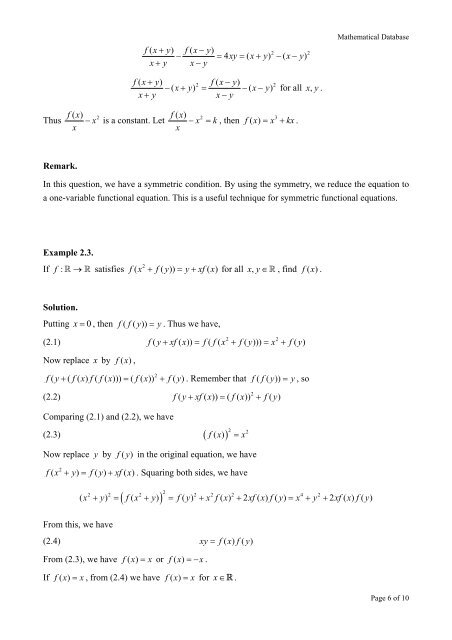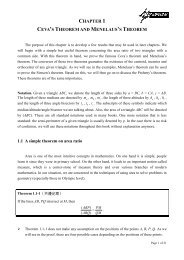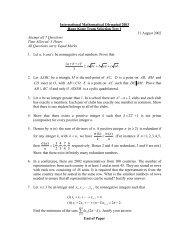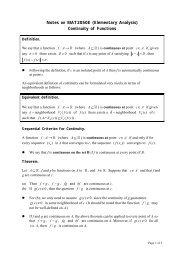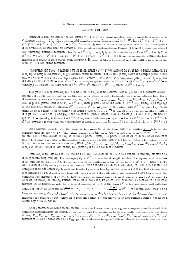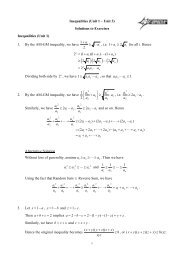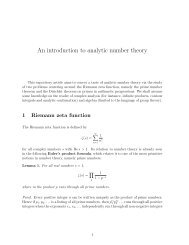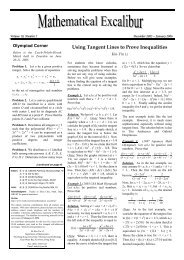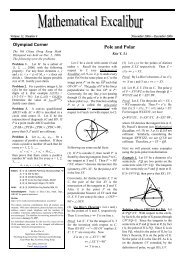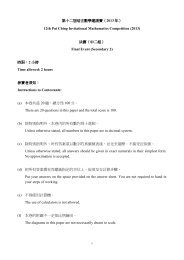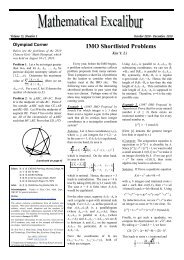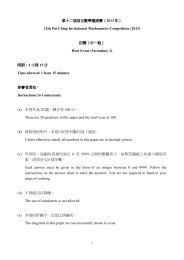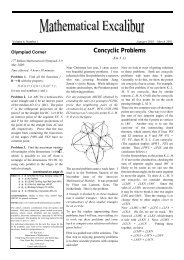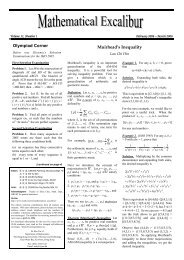1. Functional equations in one variable
1. Functional equations in one variable
1. Functional equations in one variable
You also want an ePaper? Increase the reach of your titles
YUMPU automatically turns print PDFs into web optimized ePapers that Google loves.
f( x+ y) f( x−<br />
y)<br />
− = 4 xy = ( x+ y) −(<br />
x−<br />
y)<br />
x+ y x−<br />
y<br />
2 2<br />
Mathematical Database<br />
f( x+ y) 2 f( x−<br />
y)<br />
2<br />
− ( x + y) = −(<br />
x−<br />
y ) for all x,<br />
y .<br />
x+ y x−<br />
y<br />
Thus<br />
f( x)<br />
x<br />
2<br />
− x is a constant. Let<br />
f( x)<br />
x<br />
2<br />
− x = k , then<br />
3<br />
f ( x)<br />
x kx<br />
= + .<br />
Remark.<br />
In this question, we have a symmetric condition. By us<strong>in</strong>g the symmetry, we reduce the equation to<br />
a <strong>one</strong>-<strong>variable</strong> functional equation. This is a useful technique for symmetric functional <strong>equations</strong>.<br />
Example 2.3.<br />
If f<br />
: → satisfies<br />
2<br />
f ( x + f( y)) = y+ xf( x)<br />
for all xy∈ , , f<strong>in</strong>d f ( x ).<br />
Solution.<br />
Putt<strong>in</strong>g<br />
x = 0 , then f ( f( y))<br />
= y. Thus we have,<br />
(2.1)<br />
f y xf x f f x f y x f y<br />
2 2<br />
( + ( )) = ( ( + ( ))) = + ( )<br />
Now replace x by f ( x ),<br />
2<br />
f ( y+ ( f( x) f( f( x))) = ( f( x)) + f( y)<br />
. Remember that f ( f( y))<br />
= y, so<br />
(2.2)<br />
f y xf x f x f y<br />
2<br />
( + ( )) = ( ( )) + ( )<br />
Compar<strong>in</strong>g (2.1) and (2.2), we have<br />
(2.3) ( ) 2 2<br />
f ( x)<br />
= x<br />
Now replace<br />
y by f ( y ) <strong>in</strong> the orig<strong>in</strong>al equation, we have<br />
2<br />
f ( x + y) = f( y) + xf( x)<br />
. Squar<strong>in</strong>g both sides, we have<br />
( ) 2<br />
2 2 2 2 2 2 4 2<br />
( x + y) = f( x + y) = f( y) + x f( x) + 2 xf( x) f( y) = x + y + 2 xf( x) f( y)<br />
From this, we have<br />
(2.4) xy = f( x) f( y)<br />
From (2.3), we have f ( x ) = x or f ( x)<br />
=− x.<br />
If f ( x ) = x, from (2.4) we have f ( x ) = x for x∈R .<br />
Page 6 of 10


